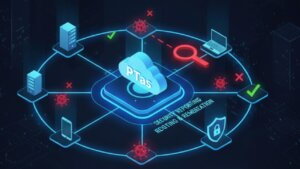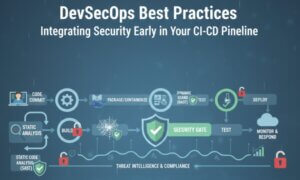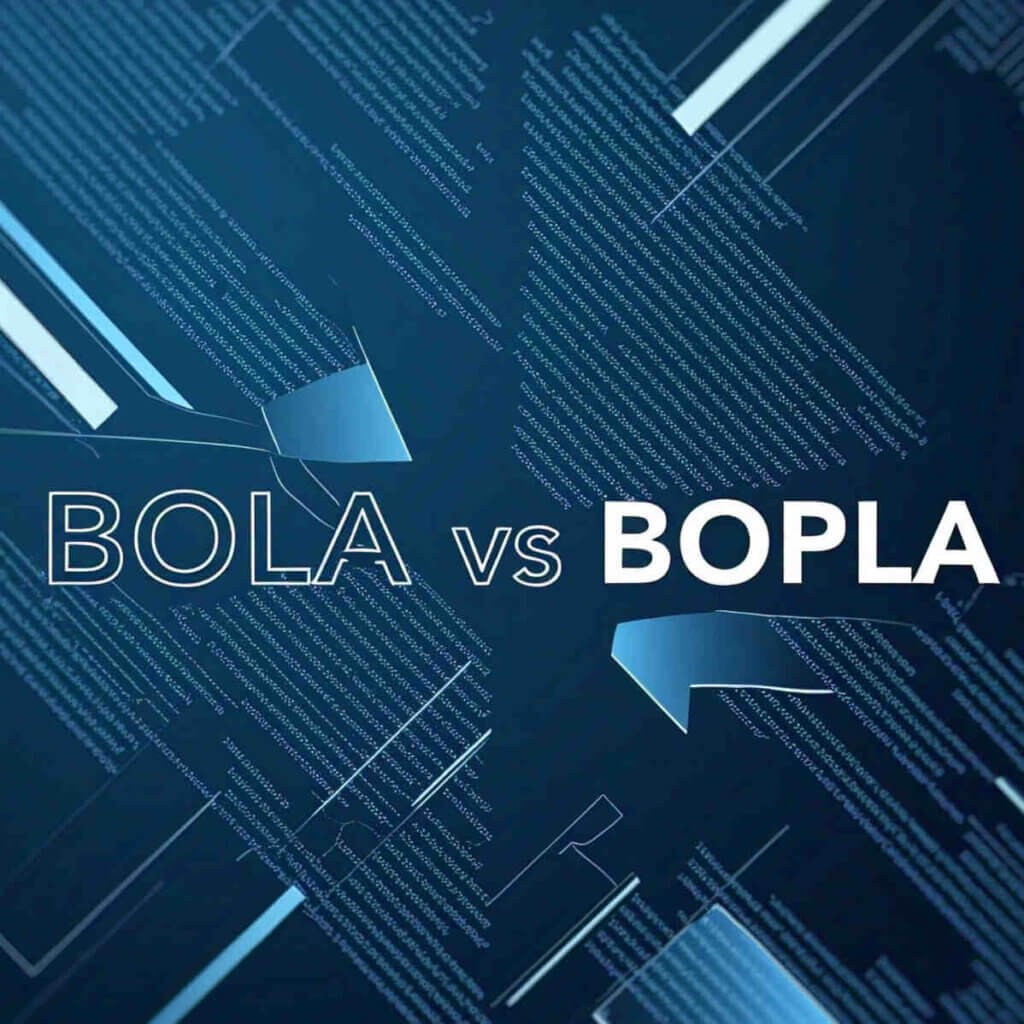APIs are at the core of modern applications, enabling seamless communication between systems, devices, and services. However, as their usage increases, so does the potential for exploitation. The OWASP API Security Top 10 highlights the most pressing threats to API ecosystems. Among these, Broken Object Level Authorization (BOLA) stands out as the most critical and frequently exploited vulnerability. But what sets BOLA apart from the rest, and why should developers and security teams prioritize its mitigation above all?
In this blog, we’ll explore the significance of BOLA, compare it to other top API vulnerabilities, and discuss why it deserves a front-row seat in your API security strategy.
-Book Your FREE Security Consultation Today!
What is BOLA?
Broken Object Level Authorization occurs when an API fails to properly enforce access controls at the object level. This means a user can access data or resources they shouldn’t simply by manipulating object identifiers (e.g., changing a user ID or document ID in a request URL).
Example:
GET /api/users/1234
If a user changes the ID to 1235 and receives another user’s data without authorization checks, the API is vulnerable to BOLA.
Why is BOLA So Dangerous?
Data Leakage: Attackers can gain access to sensitive personal or business data.
Simple to Exploit: Often requires no special tools, just a browser or script.
Widespread: Common in both REST and GraphQL APIs.
Hard to Detect: Traditional vulnerability scanners may miss object-level issues.
OWASP API Security Top 10: A Quick Overview
Here are the 2025 OWASP API Security Top 10 threats:
Broken Object Level Authorization (BOLA)
Broken Authentication
Broken Object Property Level Authorization (BOPLA)
Unrestricted Resource Consumption
Broken Function Level Authorization
Unrestricted Access to Sensitive Business Flows
Server Side Request Forgery (SSRF)
Security Misconfiguration
Improper Inventory Management
Unsafe Consumption of APIs
Now, based on this information, let’s compare BOLA to 5 top listed threats.
| Vulnerability | Description | Attack Surface | Detection Complexity | Exploit Impact |
|---|---|---|---|---|
| BOLA | Unauthorized access to objects via ID manipulation | REST/GraphQL APIs | High | High |
| Broken Authentication | Flawed login/session mechanisms | Login endpoints | Medium | High |
| BOPLA | Unauthorized access to specific fields in an object | API payloads | High | Medium |
| Unrestricted Resource Consumption | DoS via excessive API requests or payloads | Rate limits and resources | Low | Medium |
| Broken Function Level Authorization | Unauthorized access to restricted API functions | Admin/privileged endpoints | Medium | High |
| Security Misconfiguration | Insecure settings or missing controls | Headers, permissions, configs | Medium | Medium |
BOLA vs. Broken Authentication
Broken Authentication involves vulnerabilities in the authentication process, allowing attackers to impersonate users. While dangerous, it typically requires bypassing login mechanisms.
Key Differences:
Exploitation: BOLA can be exploited after authentication, while Broken Authentication targets the login process.
Impact: BOLA leads directly to unauthorized data access, often affecting many users.
Why BOLA Matters More: Even with secure authentication, a BOLA vulnerability can lead to massive data exposure.
BOLA vs. BOPLA (Broken Object Property Level Authorization)
BOPLA involves insufficient access controls on individual properties within an object, allowing manipulation of fields like user roles or permissions.
Key Differences:
Granularity: BOLA targets whole objects; BOPLA targets specific object fields.
Exploitability: BOLA is easier to discover and exploit.
Why BOLA Matters More: BOLA is more commonly exploited due to its simplicity and broader impact.
BOLA vs. Broken Function Level Authorization
This threat refers to improper access controls on API functions like administrative actions.
Key Differences:
Scope: Function-level vulnerabilities involve entire operations; BOLA affects data access.
Detection: Function-level issues may be easier to catch during testing.
Why BOLA Matters More: Most applications expose object data, and without proper checks, it’s an open invitation for attackers.
BOLA vs. Security Misconfiguration
Security misconfiguration involves improperly set security headers, permissions, or error messages.
Key Differences:
Nature: Misconfiguration is a setup issue; BOLA is a logical flaw in authorization.
Impact: Misconfigurations might expose systems; BOLA exposes data directly.
Why BOLA Matters More: BOLA directly impacts users’ privacy and business data.
Why BOLA is the Most Critical
1. It’s the Gateway to Data Breaches
Exploiting BOLA provides attackers direct access to unauthorized data. This leads to regulatory violations (e.g., GDPR, HIPAA) and loss of user trust.
2. It’s Simple Yet Powerful
Unlike complex injections or authentication bypasses, BOLA requires little more than changing an object ID. Yet, the impact is substantial.
3. Traditional Scanners Miss It
BOLA often requires context-specific logic to detect, which automated scanners may not handle well. Manual testing or context-aware automation is necessary.
4. It’s Common Across All API Types
RESTful, GraphQL, gRPC—BOLA doesn’t discriminate. It’s found wherever object references are exposed.
How to Prioritize BOLA Mitigation
Enforce Object-Level Access Controls
Every API request should validate whether the requester has permission to access the requested object.
Use Indirect References
Avoid exposing sequential IDs. Instead, use UUIDs or hashed values.
Implement RBAC/ABAC Systems
Restrict access based on user roles or contextual attributes.
Include BOLA Tests in CI/CD Pipelines
Automate authorization testing to catch BOLA before code reaches production.
Monitor and Log Access Attempts
Track object access patterns. Sudden changes or enumeration attempts can indicate BOLA exploitation.
Conclusion
BOLA represents the perfect storm of simplicity and severity. Among OWASP’s API threats, it remains the most common and impactful due to its direct path to sensitive data. While other vulnerabilities are dangerous, none offer the same low-effort, high-reward attack vector.
By understanding what makes BOLA so dangerous and taking active steps to mitigate it, organizations can significantly bolster their API security. Remember: authentication is just the beginning—authorization at the object level is where real security lies.
Why Businesses Trust SecureMyOrg for Comprehensive Network Security
At SecureMyOrg, we uncover and fix all possible security vulnerabilities of mobile and web, while providing solutions to mitigate risks. We are trusted by renowned companies like Yahoo, Gojek and Rippling, and with 100% client satisfaction, you’re in safe hands!







Some of the things people reach out to us for –
- Building their cybersecurity program from scratch – setting up cloud security using cost-effective tools, SIEM for alert monitoring, building policies for the company
- Vulnerability Assessment and Penetration Testing ( VAPT ) – We have certified professionals, with certifications like OSCP, CREST – CPSA & CRT, CKA and CKS
- DevSecOps consulting
- Red Teaming activity
- Regular security audits, before product release
- Full time security engineers.
Relevant Posts

AI-Powered Phishing Emails: 7 Ways to Spot and Stop Them Before They Strike
Penetration testing as a service (PTaaS) lets experts simulate real attacks to uncover vulnerabilities before hackers do. This guide explains the process, benefits, and costs, helping businesses strengthen defenses with predictable, ongoing security checks.

Why Regular Penetration Testing is Essential for Modern Companies
Penetration testing as a service (PTaaS) lets experts simulate real attacks to uncover vulnerabilities before hackers do. This guide explains the process, benefits, and costs, helping businesses strengthen defenses with predictable, ongoing security checks.

What Is Penetration Testing as a Service?
Penetration testing as a service (PTaaS) lets experts simulate real attacks to uncover vulnerabilities before hackers do. This guide explains the process, benefits, and costs, helping businesses strengthen defenses with predictable, ongoing security checks.

How To Inspect Encrypted Traffic Without Breaking Privacy
Network administrators face a challenge: securing systems while respecting privacy. This guide explains how to inspect encrypted traffic without breaking privacy using metadata, anomaly detection, and machine learning ensuring visibility, compliance, and trust.

How to Audit Infrastructure as Code (IaC) for Security Vulnerabilities
Discover how to audit Infrastructure as Code (IaC) for security vulnerabilities with this practical guide. Learn to scan IaC files using tools like Checkov, fix issues like exposed resources, and integrate audits into CI/CD pipelines. Protect your cloud systems from misconfigurations and ensure compliance with clear, actionable steps.

DevSecOps Best Practices: Integrating Security Early in Your CI/CD Pipeline
This article provides a practical guide to embedding security into every stage of your CI/CD pipeline. Learn core DevSecOps best practices like SAST, DAST, dependency scanning, secrets management, and compliance automation to catch vulnerabilities early, foster a culture of shared ownership, and build a secure-by-design development process that accelerates release cycles.



